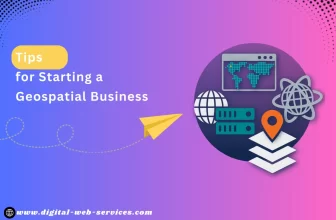
If you’ve been in the business for a while now, you must’ve encountered the phrase ‘content is king.’ Because in this digital age, it truly is. Content that captivates and resonates with your target audience is a gem. Most of the time, it’s the primary factor in achieving business goals in this highly competitive industry.
Today, tech companies significantly rely on digital marketing to raise awareness about their products, get traffic, and support sales. In this regard, producing content is the primary activity of any brand that can ensure the attraction of leads. Companies hire specialists and content creators to meet the demands of the clients and interest the prospects.
One of the approaches that can significantly add to content production and distribution is content repurposing. Notably, it is beneficial for cross-platform publishing when the marketers reuse content published on one platform for another one.
In this article, you will know more about the content repurposing concept in terms of digital business operation and see some tips on how to reuse content.
What is Repurposing Content?
Before all, repurposing content is the approach that contemplates using the existing content that you have to create other types of materials that the business can utilize for its content marketing needs. In particular, when you choose to reuse content, you are likely to change the content’s audience, platform, and format.
One example is repurposing a blog post and turning it into an infographic, podcast episode, or video. But to do that, you need to employ effective strategies to make the content relevant and up-to-date. This will improve its performance in search engines and attract more traffic. This is what content refresh is all about.
Others expand the content by adding images and videos to make it more engaging. At the same time, some optimize the content by adding targeted keywords and meta descriptions.
However, considering that editing and adjusting materials take less effort than producing new ones, it creates certain benefits for the business. Firstly, you can maximize the content efforts of the team. Secondly, the team enlarges its possibilities by covering other strategies.
Reasons for Using Content Repurposing
The content repurposing examples prove that such a tactic can be beneficial for the business due to the following:
- When you reuse content materials, you get a chance to deliver them across different platforms. Considering that every blog, forum, or social media has its audience, you can use the same facts but from different angles.
- Content repurposing allows you to reuse content pieces of older posts adding to the posting frequency. It is a proven fact that consistent and frequent posting improves visibility. With the defined pool of materials, you can determine the appropriate pieces for the content plan that will be rich and valuable in terms of customer needs.
- SEO opportunities. Besides, you can attain backlinks if using the best parts of the successful content pieces. A good case study can be a basis for a guide or article. The research can be cited by the experts and opinion leaders, creating opportunities for essential backlinks. Besides, infographics seem to be an effective way to get backlinks and website promotion, which usually appear from presentations and guides people write to improve their blogs.
Let’s consider a post, the one that gets a lot of traffic, supported by the data and research, as an example. Notably, you can use it as the basis for greater diversification of content and better answer to customers’ needs. Moreover, one can modify it to offer insights to the experts for the subsequent promotion.
To do so, a marker would need to define all the data, present it in the form of infographics, and outreach an expert or a blogger. For the visualization, one can use some content repurposing software or graphic design tools like Piktochart.
For the outreach, you can take an email finder or email verifier if you have an email in mind (check this one if such a technique is new to you https://getprospect.com/email-verifier). That way, you will be able to get the expert and improve your reach and get a backlink.
How to Repurpose Content?
As you can see, content repurposing can bring some benefits. However, you need to do it right to maximize your marketing efforts. These universal tips will be helpful not only to b2c actors but for b2b and saas businesses as well.
Often, marketers’ foundation for content repurposing relies on engagement, traffic, and shares. You need to identify and leverage which posts performed well in the past. And after you’ve added the necessary materials to the content, promoting it on the right channel to reach new audiences is crucial.
Focus on evergreen content
First of all, if you decide to reuse content you have, focus on evergreen pieces that have a long-term value for the clients. They refer to guides, recommendations, pieces of advice from experts, and data. At least, it will save you time the content creators usually spend on research of information.
Evergreen content remains relevant and valuable over time. You must identify these pieces and address any gaps you may discover. Remember that although the content is relevant, it may need to be updated with new information.
Turn info into ebooks or guides
Try to identify the successful pieces and make the collection that you will be able to include into a guide or make an ebook out of it. Content repurposing works both ways: you can accumulate meaningful things into one whole thing, or vice versa, take the details and share them as separate pieces.
Use infographics
At the same time, you can use content repurposing tools to create pictures and infographic elements for social media. In particular, graphic designing tools, including Piktochart, Canva, and other editing tools, can help you create infographics worthy of the prospect’s attention and reading.
What can you utilize as a source for the infographics? Data, conclusions, citings, recommendations. Taking out details and underlining the article’s key findings in the form of infographics would significantly add to your social media page.
Integrate stats into social media and case studies
Your social media posts should provide value to the readers. If you are a B2B or SaaS company, the stats can interest your audience. Moreover, if they value case studies, the stats are the way to present the information. Why? The value figures and data are based on the research as they offer them more insight and talk facts.
Add colors to old posts
Another thing is that the marketer can repurpose ideas and use the old posts to contribute to the marketing operation. To be effective, you should make your content relevant. In particular, the industry is constantly developing, and your content will benefit from the addition of new trends or an update on the information. That’s why you should update the old pieces that were published years ago with the latest news, research pieces, and case studies.
Utilize webinars to back video marketing
Interestingly, when you hold digital events, you can use pieces from there to create ads, commercials, social media posts, or use in video marketing. In particular, webinars are usually full of insights and answers to the issues due to the guests’ expertise and Q&A sessions. With the help of video editors or video content repurposing software, you can insert parts with the insights into the social media pages in an easy way and reuse content to promote the subsequent events.
Build connections around expertise
Lastly, you can apply repurposing content to develop business connections and enlarge your online presence. The opinion leaders and experts can become mediums to different audiences. How? For instance, you have a case study that needs modification. Instead of creating a new survey, you can ask experts to comment on the existing ones and add their data. In this regard, you can look for experts’ and bloggers’ emails with the GetProspect email finder tool and offer them a piece to contribute into.
After they contribute to your article or work, ask them to mention your work and tag you on social media. That way, you can increase your online presence. Besides, you are likely to repurpose ideas of various leaders and create more relevant content for your social media or site.
Digital Web Services (DWS) is a leading IT company specializing in Software Development, Web Application Development, Website Designing, and Digital Marketing. Here are providing all kinds of services and solutions for the digital transformation of any business and website.










